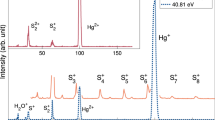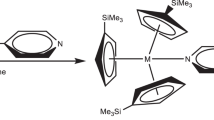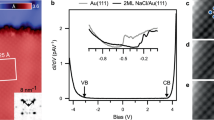Abstract
ACCORDING to Samuel and co-workers1, atoms of the second group of the Periodic System are chemically inert in their helium-like ground term 1S. Linkage becomes possible only in an excited atomic term. Among many diatomic molecules (oxides and chlorides) of this group, cadmium fluoride (CdF), from its emission bands2, is claimed to be a very conclusive example of this kind of linkage. Other investigations on the spectra of the diatomic halides of mercury, cadmium and zinc3 4, however, make it probable that the ground state of these molecules is built up from unexcited atoms.
This is a preview of subscription content, access via your institution
Access options
Subscribe to this journal
Receive 51 print issues and online access
$199.00 per year
only $3.90 per issue
Buy this article
- Purchase on Springer Link
- Instant access to full article PDF
Prices may be subject to local taxes which are calculated during checkout
Similar content being viewed by others
References
Phil. Mag., 21, 41 (1936). NATURE, 138, 411 (1936).
Asundi, Samuel and Zakki-Uddin, Proc. Phys. Soc., 47, 235 (1935).
Sponer, Z. phys. Chem., B, 11, 425 (1931). Oeser, Z. Phys., 95, 699 (1935).
Wieland, Z. Phys., 76, 801 (1932) and 77, 157 (1932).
Birge, Trans. Faraday Soc., 25, 707 (1929).
Elliott, Proc. Roy. Soc., A, 127, 638 (1930).
Author information
Authors and Affiliations
Rights and permissions
About this article
Cite this article
WIELAND, K. Spectrum of Mercury Chloride (HgCl) and Samuel's Theory of Linkage. Nature 139, 590–591 (1937). https://doi.org/10.1038/139590b0
Issue Date:
DOI: https://doi.org/10.1038/139590b0
Comments
By submitting a comment you agree to abide by our Terms and Community Guidelines. If you find something abusive or that does not comply with our terms or guidelines please flag it as inappropriate.



